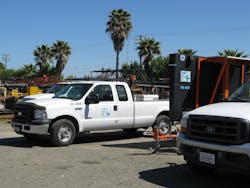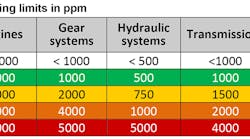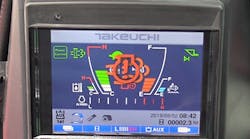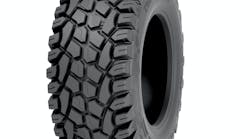Replacing the brake technology in your vehicle fleet is a decision with ramifications beyond just the cost of the repair. There are other factors for maintenance managers and drivers to consider: safety, reliability, and comfort.
Ron Sherman of GRI Engineering & Development, the parent company behind Bendix Brakes, offers four main tips to think about when weighing the decision.
“Find the right balance between top-quality pedal feel and affordable price, determine whether vehicle use patterns demand any special brake coverage, consider the importance of a complete brake job, and find a brake manufacturer with a solid reputation,” Sherman says.
A first consideration is how the driver wants their new brakes to feel, as well as their price point. Whether you choose to prioritize a pedal feel identical to that of the vehicle’s OE (Original Equipment) brakes, or choose to prioritize low cost, Sherman says you should have an idea in mind of these two factors before making a brake purchase.
Top-of-the-line brake products from reputable brake manufacturers can meet or exceed OE expectations, offering the same type of pedal feel as when the vehicle was brand new, he says.
Some manufacturers even specialize their top-quality brake product line with a range of products that corresponds to OE brakes for each individual vehicle. In the Bendix Premium line, Sherman notes that friction materials in each brake product have been tested against OE formulations to create a material that is comparable to, or sometimes even exceeding, the comfort and quality of the vehicle’s original brakes.
If price is of greater concern than comfort equaling a vehicle’s original brakes, then it’s better to choose a brake product that is proven safe, but is a more economical option. For drivers on the second, third, or even fourth set of replacement brakes for a vehicle, especially those who don’t put on a lot of mileage, price is often the most important characteristic of an ideal brake product, aside from safety. In this case, Sherman says purchasing brake products with mid-grade friction formulations, such as the Stop by Bendix line, would better suit the buyer.
There are some cases in which standard friction formulations designed with average drivers’ vehicle use in mind don’t quite measure up in terms of safety or comfort. Drivers who need their vehicles to perform well in severe-duty applications like towing or hauling, and especially those who drive in mountainous regions, can benefit from more robust friction materials to meet their more robust braking needs. These brake products are often semi-metallic and can dissipate heat more easily as well as deliver more friction, according to Sherman.
Regardless of the brake products chosen, Sherman says it is essential to perform or request a complete brake job when replacing any worn brake components. This means that when changing brake pads, rotors should either be replaced as well, or, if the rotors are still within specifications, they should be thoroughly cleaned and resurfaced. New friction materials introduced in the last decade or so leave a thin film on the rotors, which helps to break in the new brakes, so to speak, leading to improved brake performance. Sherman advises that replacing brake pads but ignoring rotor surfaces impedes this critical material transfer and can introduce problems such as noise, poor performance, and premature wear.
In addition to pads and rotors, it is important to ensure that the caliper and caliper hardware, piston, seals, and other components are all working properly and are adequately lubricated. If they are not, they should be re-lubricated, repaired, or replaced. Even technology as minor as the brake abutment clips has become advanced over the last decade or so, with spring steel under tension that can wear out if not replaced.
“When you opt for a complete brake job, you can rest assured that every component of your braking system is in top shape, which, given that brake performance is critical to vehicle safety, is essential,” Sherman says.
Sherman’s final tip to consider when choosing replacement brakes is to ensure that you purchase brakes from a reputable manufacturer. Each individual manufacturer creates and tests its own friction formulas, so there is a wide range of quality available on the market.
“Look for a manufacturer with a product line that is full integrated from a manufacturing point of view; one that makes its own backing plates, hardware, shims, and more,” Sherman says.





